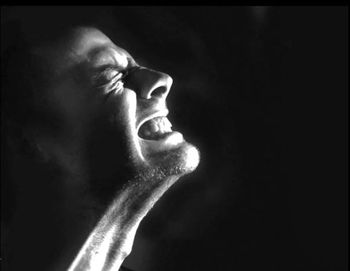
ACP Update on Low Back Pain Treatment Guidelines
The update includes a nod to tai chi as a nondrug intervention and further supports acupuncture. But even new research falls short in 2 important ways.
The American College of Physicians recently released an update of its 2007 guideline on pharmacologic and noninvasive nonpharmacologic treatments for low back pain (LBP) incorporating new evidence published since then.1 The guideline is accompanied by reviews of this new evidence and rationale for its inclusion.2,3
The guideline is very useful as to the current state of knowledge about best treatment practices for acute, defined as lasting less than 4 weeks, subacute, lasting 4 to 12 weeks, and chronic, lasting more than 12 weeks, LBP. However, one of the first things readers will notice is just how little we really know about what is most effictive.
Reviewers rated evidence based on its strength to support treatment recommedations and, in their opinion, essentially all of it was of low or moderate strength. Considering the upbiquity of LBP and the fact that it is is likely as old as makind, this is a sad state of affairs. And although the guideline does not address surgical or other invasive therapies such as epidural steroid injections, the evidence to support these as treatments for LBP is certainly no better.
The guideline divides treatment recommendations into those for acute and subacute LBP and those for chronic LBP. The following is a brief review of these recommendations, what new research has reported, and some comments of my own.
Acute and Subacute LBP
The guideline notes that in most people acute or subacute LBP resolves no matter what treatment modalities are used, and so it recommends only conservative measures be used.
Nonpharmacologic therapies
Superficial heat, massage, acupuncture, or spinal manipulation. The benefits of acupuncture were identified in the new research.
As an acupuncturist myself, I agree with the addition of the recommendation for acupuncture. Acupuncture is essentially a side-effect free modality with two caveats. The first is that still in a number of states, acupuncture can be practiced by anyone with a license to practice medicine even without any training. When done correctly acupuncture is essentially pain free. When done incorrectly it can be very painful.
The only major side-effect associated with acupuncture is infection; the risk can be completely eliminated by the use of disposable needles.
As to the other nonpharmacologic modalities, heat is generally safe as long as common sense is employed and massage is also quite safe. I do have some concerns about spinal manipulation as this can do serious harm to the patient if done incorrectly.
Pharmacologic therapy
With regard to the pharmacologic treatment, it recommends limiting these to either nonsteroidal anti-inflammatory drugs (NSAIDs) or skeletal muscle relaxants. A major change was the finding that acetaminophen was ineffective to treat acute LBP. Systemic corticosteroids were also found not to be effective for acute, subacute, or chronic LBP, even where radicular pain was present.
The use of NSAIDs as a first-line pharmacologic therapy makes sense although there are patients who may benefit from acetaminophen and there are many patients who are unable to take NSAIDs for a variety of medical reasons including peptic ulcers, anticoagulant therapy, and cardiac disease.
I have never been enthusiastic about the use of skeletal muscle relaxants. There is little evidence that they actually directly relax muscles. Most are fairly sedating, the major side effect, and it is likely that this effect is responsible for whatever muscle relaxation they may provide.
I wholeheartedly agree with the recommendation against using systemic corticosteroids. I have never believed that there is much evidence to support a place for them in the treatment of any forms of LBP; in fact, as far as I can recall, I have never prescribed any of these drugs for patients with LBP.
Next: Chronic LBP>>
Chronic LBP
Conservative measures
For chronic LBP the guideline recommends a variety of conservative modalities including exercise; psychological therapies (ie, mindfulness-based stress reduction, progressive relaxation, biofeedback, and cognitive behavioral therapy); tai chi; yoga; multidisciplinary rehabilitation; spinal manipulation; massage; and acupuncture.
The major changes based on recent research are the addition of tai chi and mindfulness-based stress reduction and strengthening of support for the use of yoga.
Pharmacotherapy
With regard to pharmacologic therapies for chronic LBP, the guideline again recommends NSAIDs as first-line therapy followed by tramadol or duloxetine as second-line therapy. Other than tramadol, the authors recommend that use of opioids should be limited to patients for whom other therapies have not been effective and that it be very clear that the potential benefits outweigh the problems that can be associated with their use. The evidence review noted the dearth of studies demonstrating that long-term use of opioids is beneficial. The very conservative approach in these recommendations to prescribing opioids fits with other current guidelines on use of these drugs.
There was insufficient evidence to support the use of the anticonvulsants gabapentin and pregabalin for chronic LBP, both of which are FDA approved for several other painful conditions.
With the possible exception of spinal manipulation, I am again in complete agreement with these recommendations. Sadly, based on my own experience and despite the fact that we have known about the benefits of nondrug therapies for years, many patients with chronic LBP will receive few if any of the nonpharmacologic therapies before they undergo more invasive therapies such as epidural steroid injections and surgery.
More clinical experience
I have no problem with recommendations for duloxetine and tramadol although I rarely prescribe the latter. Tramadol is a combination drug containing a weak serotonin-norepinephrine reuptake inhibitor (SNRI) with a weak opioid. Studies have demonstrated that most of the analgesia it provides is related to the SNRI. Tramadol does carry some risk for abuse, related to its opioid component, so I have always thought it makes more sense to use a stronger SNRI like duloxetine instead and thereby eliminate this risk.
Whether duloxetine is actually more efficacious than other SNRIs such as the tricyclic antidepressants (TCAs) or venlafaxine is open to question. There is more research supporting the use of duloxetine for LBP but this may reflect the fact that it is the only SNRI with FDA approval as an analgesic for LBP and so has been subject to more investigation.
Duloxetine does have a much more benign side-effect profile than the TCAs, lacking the anticholinergic and sedative class effects. In terms of side effects, it doesn't differ much from venlafaxine but it does have the benefit of easier dosing and so safe titration to a therapeutic dose of duloxetine can be accomplished more qucklytitration to a therapeutic dose of duloxetine can be reached being easier to dose as one can safely reach a therapeutic dose of duloxetine more quickly than one of venlafaxine.
The review does note that one of the many areas for which there is limited research is whether combining medications from different classes provides any additional benefits.
One pharmacologic therapy that I have frequently used for LBP that was not evaluated by the review is topical lidocaine patch. The patch is essentially side-effect free without any risk of drug-drug interactions so it can be used safely by people taking medications for other conditions-one reason I have always felt it is worth trying in any form of localized pain. The lack of studies on its efficacy for LBP no doubt reflects the fact that the medication’s manufacturer sought FDA approval only for pain related to postherpetic neuralgia.
Next: Important Caveats>>
2 Important Caveats
There are two very important caveats with regard to the recommendations for management of chronic LBP.
No head-to-head studies
As the guideline notes, there is limited head-to-head research comparing the various non-pharmacologic treatments and those that have been performed provided little information as to which works best for the individual patient. The review also found that in most cases it was not possible to determine if patients in the studies experienced radicular pain. Thus there is little guidance for clinicians and patients on the order in which the various therapies should be tried.
The only related recommendation it could make is to "select therapies that have the fewest harms and lowest costs." As most of the nonpharmacologic therapies are essentially harmless, the decisions will primarily come down to cost and most likely what insurance companies will cover. Unfortunately, this means the choices will be based less on science and more on economics.
Little functional improvement
Finally, it is worth noting that for all forms of chronic pain, the major focus of treatment is on improving function rather than on pain reduction alone. Even if patients report less pain, absence of improved functioning calls into question any benefit from the therapies being provided.
For virtually all the therapies recommended by the guideline improvements in function were much smaller than those for pain. Nor was much guidance available on the impact of the various therapies on important issues such as disability or return to work.
Considering that even the benefits for pain of any of the recommended therapies were for the most part found to be small to moderate, it appears that while we may now know more about what doesn't work we still have very limited knowledge about what does.
References:
1. Qaseem A, Wilt TJ, McLean RM, et al. Noninvasive treatments for acute, subacute, and chronic low back pain: a clinical practice guideline from the American College of Physicians. Ann Intern Med. 2017;doi:10.7326/M16-2367.
2. Chou R, Deyo R, Friedly J, et al. Nonpharmacologic therapies for low back pain: a systematic review for an American College of Physicians clinical practice guideline. Ann Intern Med. 2017;doi:10.7326/M16-2459.
3. Chou R, Deyo R, Friedly J, et al. Systemic pharmacologic therapies for low back pain: a systematic review for an American College of Physicians clinical practice guideline. Ann Intern Med. 2017;doi:10.7326/M16-2458.
Newsletter
Enhance your clinical practice with the Patient Care newsletter, offering the latest evidence-based guidelines, diagnostic insights, and treatment strategies for primary care physicians.































































































































































































































































































































